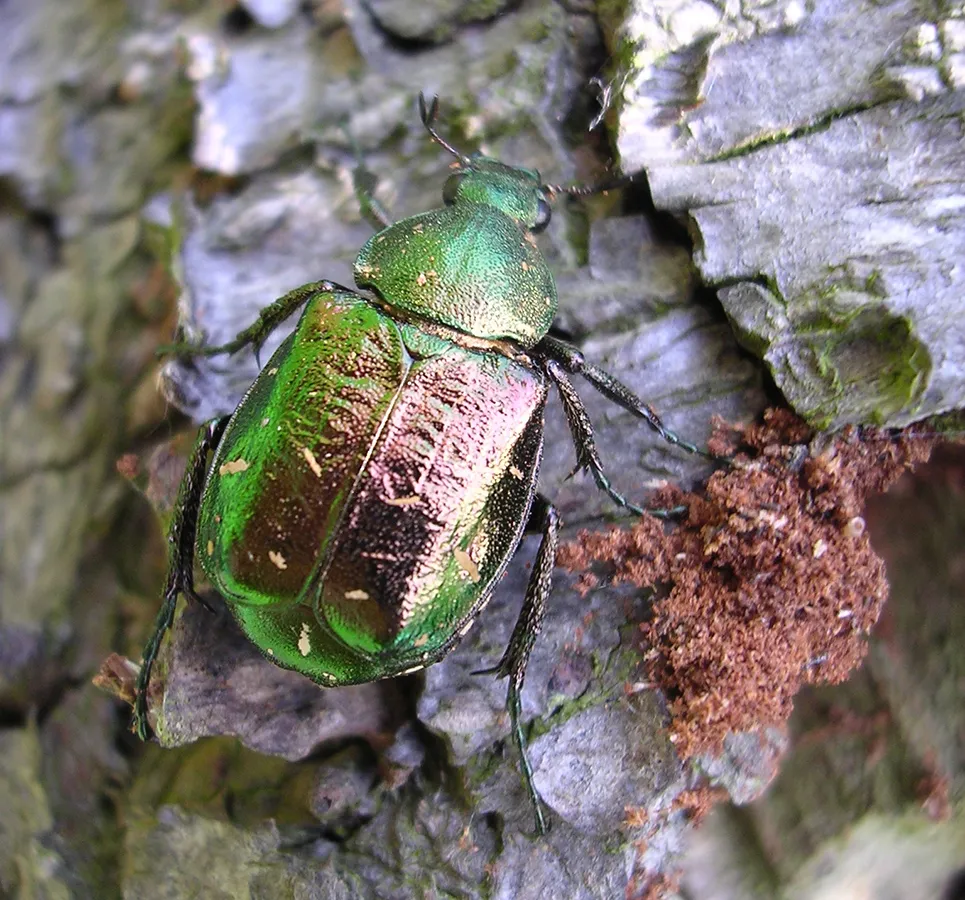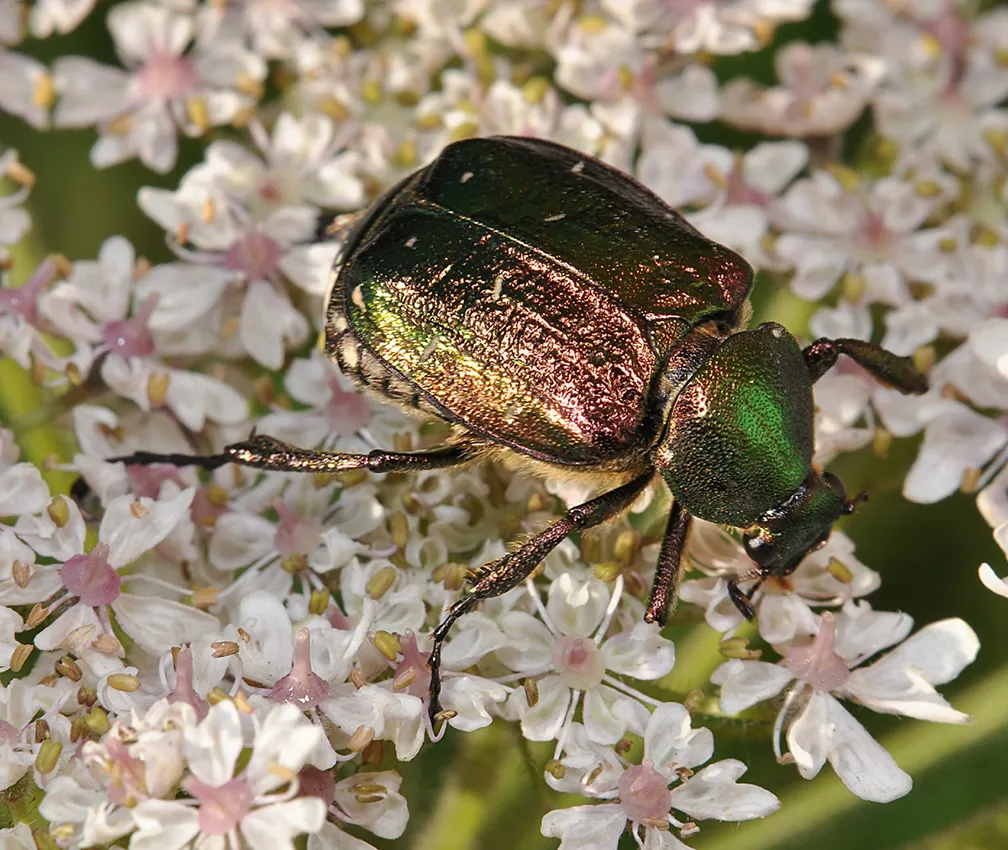The noble chafer is a rare, brightly coloured, metallic-green beetle with white speckles, only found in a handful of places across the UK. Thought to be an old forest relic, they now rely on old, decaying fruit tree wood for their larvae to live in and eat, having a preference for mature trees which are at risk from being cleared as they reach the end of their productive life.
The larvae can take up to three years to grow into adults, eventually emerging from the old fruit tree they have been living in. Adults are then on the wing for about six weeks and can be seen from June and August.
Here is our expert guide to noble chafers, including advice on how to identify, diet and other species facts, written by the People's Trust for Endangered Species:
What is the scientific name of the noble chafer beetle?
The scientific name for the noble chafer is Gnorimus nobilis, Gnorimus coming from the Greek word for ‘famous’ and nobilis coming from the Latin word for noble.
They are a type of beetle belonging to the scarab family and can be easily confused with the more common rose chafer (Cetonia aurata). However, the two are in separate genera with the noble chafer belonging to the Gnorimus genus and the rose chafer under the Cetonia genus.
The noble chafer’s closest relative in the UK is the variable chafer (Gnorimus variabilis).

Where are noble chafer beetles found?
Noble chafers are found across Europe including in the UK. Here they’re largely confined to Herefordshire, Gloucestershire and Worcestershire, where they live in traditional orchards. There are a few isolated records from Oxfordshire, Kent and Buckinghamshire. They are also found in the New Forest where we think they live in old oak and beech trees.
But we know very little about their lives there. Noble chafers have recently been discovered in a very old hollow hawthorn, so we think that they are quite broad in their choice of tree species.

Are noble chafer beetles endangered?
In Britain, the species has been rare for the past century. Noble chafers are classified as ‘vulnerable’ here, which means that they are facing a very high risk of extinction in the wild and are a priority species for conservation.
Why are noble chafer beetles endangered?
Noble chafers need a continuous supply of rotting wood in the trunks or limbs of living trees. These trees are usually widely spaced and open grown trees just like in orchards and wood pastures. The loss of these habitats has certainly been a big factor in noble chafer decline - orchards are no longer commercially viable and are removed to make way for agriculture, horse grazing and increasingly to make way for housing developments. We are still learning about noble chafer ecology and PTES and Royal Holloway University are conducting surveys to find out more about their distribution.

What do noble chafer beetles eat?
Noble chafer larvae feed on decaying wood within living trees. The adults eat pollen and nectar from a variety of umbellifers (plants with clusters of tiny flowers) such as hogweed, meadowsweet and elder as their energy source for flight.

What eats noble chafer beetles?
We’re not certain what eats noble chafers, but it’s possible that birds eat the adults either when they’re flying around trying to find a mate, or when they’re at their most vulnerable, basking in the sun warming up their flight muscles before take-off. Inside the tree cavity, whilst the larvae are developing, they may be eaten by carnivorous beetle larvae sharing the same habitat.
How big are noble chafer beetles?
The adult beetles are about 2cm long. They are a beautiful iridescent green colour which also flashes gold and violet in different lights. They only live for a few weeks as an adult, so they are very rarely seen.
The People's Trust for Endangered Species (PTES) is a UK conservation charity created in 1977, ensuring a future for endangered species throughout the world.
PTES protects some of our most threatened wildlife species and habitats, and provide practical conservation support through research, grant-aid, educational programmes, wildlife surveys, publications and public events.
Main image: Noble chafer beetle. © Paul Brock

